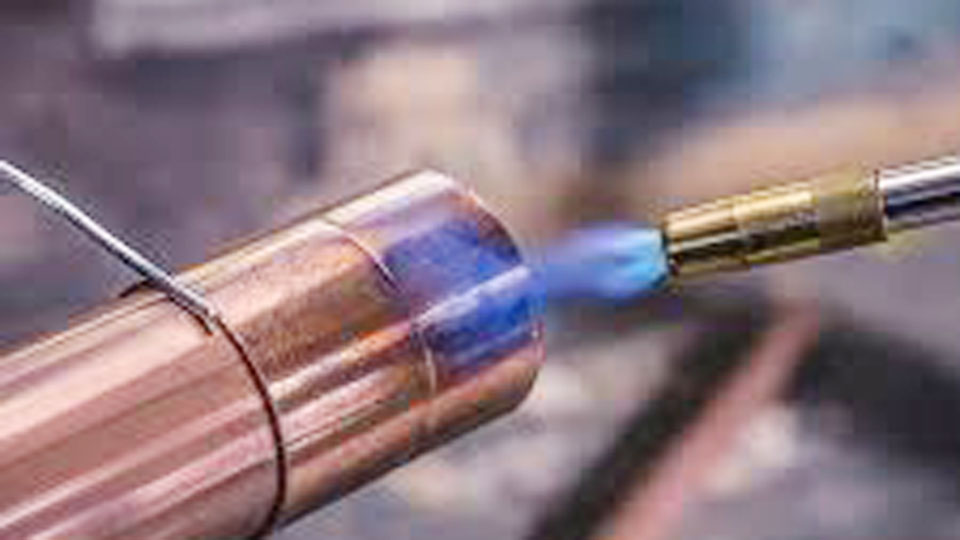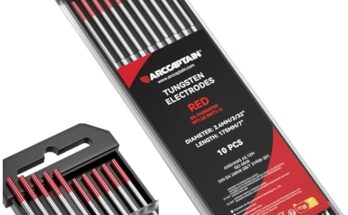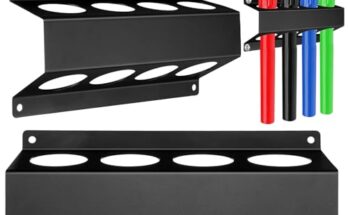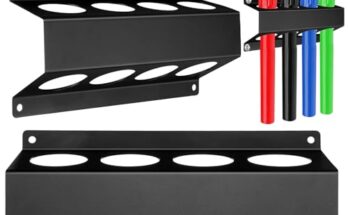When I first started working with copper pipes, I remember standing in the plumbing aisle feeling completely overwhelmed. There were so many types of solder—lead-free, acid-core, silver-bearing—and I had no idea which one was right for my project. I didn’t want to mess it up, especially since leaking pipes can cause serious damage.

Photo by bernzomatic
After years of experience and a few mistakes along the way, I can now confidently pick the right solder for any copper pipe job. I want to walk you through everything you need to know so you can do the same.
If you’re repairing a small leak or installing a whole new water line, choosing the correct solder makes all the difference between a strong, long-lasting joint and a frustrating, leaky mess.
Why Solder Choice Matters for Copper Pipe
Before we even pick up a roll of solder, it’s important to understand why the type you choose is so important.
Copper pipes are everywhere in American homes, mainly used for water supply lines. When you’re soldering (or “sweating” as the pros call it), you’re essentially creating a bond between the pipe and the fitting by melting the solder into the tiny gap between them.
If you pick the wrong solder, a few bad things can happen:
- Leaks: Weak joints that can fail over time.
- Corrosion: Some solders can react poorly with water or copper.
- Health Risks: Especially if you’re working on drinking water lines, you must use safe materials.
- Code Violations: Plumbing codes in the USA are strict about what solders you can use.
So trust me, picking the right solder isn’t just about getting the job done—it’s about doing it right and safe.
Types of Solder for Copper Pipe
Not all solders are created equal. Let’s walk through the main types you’ll come across when working with copper pipes.
Lead-Based Solder (Not for Potable Water)
Back in the old days, plumbers used lead-based solder for almost everything. It was easy to work with because it had a low melting point and flowed beautifully into joints.
However, we now know that lead is extremely toxic, especially in drinking water. Today, using lead-based solder for potable (drinkable) water systems is illegal in the USA.
You might still find lead solder being used for non-potable applications, like industrial systems or old-school heating pipes, but honestly, I avoid it altogether. There are safer, better options.
Lead-Free Solder (Best for Potable Water)
Lead-free solder is what you want if you’re working on anything that carries drinking water.
Modern lead-free solders are made from a mix of metals like:
- Tin
- Copper
- Silver
- Antimony
These solders are a little trickier to use because they melt at slightly higher temperatures than lead-based versions. But with a good torch and a little patience, they’ll give you a strong, safe joint that meets all building codes.
This is my go-to solder for 99% of household jobs.
Silver-Bearing Solder (Stronger Joints)
If you want to take it up a notch, look for silver-bearing solder.
These solders have a small amount of silver in them, which gives:
- Higher strength joints
- Better corrosion resistance
- Smoother flow characteristics
They cost a bit more, but when I’m working on high-pressure lines or critical joints, I reach for silver-bearing solder every time. It’s worth the peace of mind.
Acid-Core and Rosin-Core Solder (Not for Plumbing)
Be careful in the store—there are lots of solders made for electrical work, not plumbing.
- Acid-core solder is designed for metal repairs, but the acid can destroy pipes over time.
- Rosin-core solder is for electrical wiring, not plumbing joints.
Never use these on copper pipes. They’re not made for it and could lead to massive headaches later on.
Solder Comparison Table
Here’s a simple table you can use when deciding which solder to grab:
| Solder Type | Use Case | Composition | Key Features | Notes |
|---|---|---|---|---|
| Lead-Based | Non-potable systems | Lead and tin | Easy flow, low temp | Illegal for drinking water |
| Lead-Free | Potable water systems | Tin, copper, antimony | Safe, code-compliant | Slightly higher melt point |
| Silver-Bearing | High-stress joints | Tin, silver, copper | Strong, corrosion-resistant | Costs more but worth it |
| Acid-Core | NOT for pipes | Tin, acid flux | For metal repair | Will corrode pipes |
| Rosin-Core | NOT for pipes | Tin, rosin flux | For electronics | Not suitable for plumbing |
How to Pick the Right Solder for Your Project
Now that we know the types, let’s talk about choosing the right one for your specific project.
Are You Working on Drinking Water Lines?
If yes, only use lead-free solder. Look for labels that say “NSF certified” or “Safe for potable water.”
Are You Repairing Old Systems?
If you’re repairing an old heating system or something non-potable, you might still run into places where lead solder was used. You can usually repair with lead-free solder just fine, but if you’re unsure, double-check local codes or consult a pro.
Do You Need Extra Strength?
If the pipe will face high pressure or vibration—like a high-rise building or industrial plant—invest in a silver-bearing solder. It’s stronger and more forgiving.
Tips for Perfectly Soldering Copper Pipe
Choosing the right solder is just step one. Let me give you a few personal tips to make sure your joint is bulletproof.
Clean, Clean, Clean
You need bright, shiny metal on both the pipe and the fitting.
Use:
- Emery cloth
- Wire brush
- Pipe cleaning brush
Even if the copper looks “pretty good,” clean it anyway. Oxidation ruins solder flow.
Use the Right Flux
Flux is just as important as solder. Always use water-soluble flux for potable water lines.
Flux helps:
- Prevent oxidation while heating
- Draw solder into the joint
- Create a strong bond
Apply a thin, even layer with a brush.
Heat the Joint, Not the Solder
This is a big one. Don’t melt the solder directly with the flame. Instead:
- Heat the fitting (not the pipe).
- Let the heat transfer naturally.
- Touch the solder to the joint—if it melts on contact, you’re good.
This ensures the solder gets sucked deep into the joint for a tight seal.
Don’t Overheat
Too much heat can burn off the flux and ruin everything.
- Use a hot, focused flame.
- Keep moving your torch around the joint.
- Stop heating once the solder flows nicely.
You don’t need to turn the copper red-hot!
Common Problems and How to Fix Them
Let’s face it, mistakes happen. Here’s a quick table of common issues and how to solve them:
| Problem | Likely Cause | Solution |
|---|---|---|
| Solder won’t stick | Dirty pipe or no flux | Clean and reapply flux |
| Leak at the joint | Cold solder joint | Reheat and apply more solder |
| Burnt flux | Overheating | Start fresh, use less flame |
| Solder blobs outside joint | Wrong heating technique | Heat fitting, not solder directly |
If something looks wrong, it’s usually faster and better to clean it up and start over rather than trying to patch a bad joint.
Safe Practices When Soldering Copper Pipe
Because we’re dealing with heat, metal, and fumes, safety matters. Here’s what I always make sure to do:
- Wear safety glasses to protect your eyes from flying debris and solder splatter.
- Work in a well-ventilated area to avoid breathing flux fumes.
- Keep a fire extinguisher nearby especially when working in tight spaces or near wood framing.
- Use heat shields or flame-resistant blankets if working near flammable materials.
Being cautious takes a few extra minutes, but it could save your house—or your life.
Why Professional Plumbers Take Solder Selection Seriously
When I was apprenticing under a master plumber, he always said, “If you wouldn’t drink it, don’t put it in someone else’s pipes.”
Professional plumbers take solder selection very seriously because:
- It affects the lifespan of the plumbing system.
- It protects health and safety.
- It keeps you compliant with building codes and inspections.
Even though soldering might seem like a “small detail” compared to laying out an entire plumbing system, it’s these small details that separate a good job from a great one.
Conclusion
Choosing the right type of solder for copper pipe isn’t complicated once you know what to look for.
If you’re working on drinking water systems, always go with lead-free solder. For extra strength, silver-bearing solder is an excellent choice. Make sure to avoid electrical solders like acid-core or rosin-core, and always clean and prepare your pipe properly.
A little extra care when choosing your materials and setting up can save you a lot of trouble down the road. And there’s nothing more satisfying than turning on the water after a job and seeing a perfectly dry, leak-free pipe.
FAQs About Soldering Copper Pipe
Can I use electrical solder on copper water pipes?
No, you should never use electrical solder on copper water pipes. Electrical solders like rosin-core aren’t safe for plumbing and can cause leaks and corrosion over time.
Is silver solder better for copper pipes?
Silver-bearing solder is stronger and more corrosion-resistant than standard lead-free solder. It’s especially good for high-pressure or critical applications.
What temperature does lead-free solder melt at?
Lead-free solder usually melts between 420°F and 460°F, depending on the exact alloy. It requires a bit more heat than traditional lead-based solder.
Do I need flux to solder copper pipes?
Yes, flux is absolutely necessary. It prevents oxidation and helps the solder flow into the joint for a strong bond.
Can I reuse old copper fittings?
You can reuse old copper fittings, but you must clean them thoroughly inside and out. Remove all old solder and corrosion before attempting a new connection.







